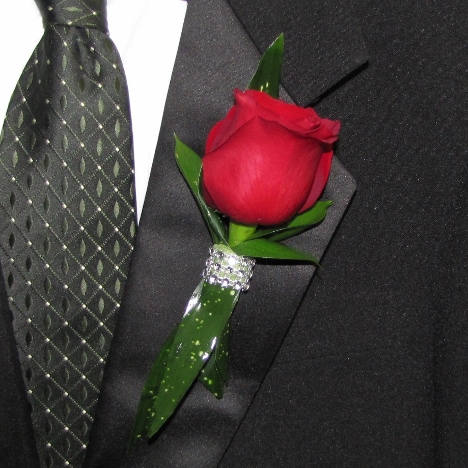flower boutonniere
This flower boutonniere has a piece of the aspidistra leaf against it, concealing the rose stem.
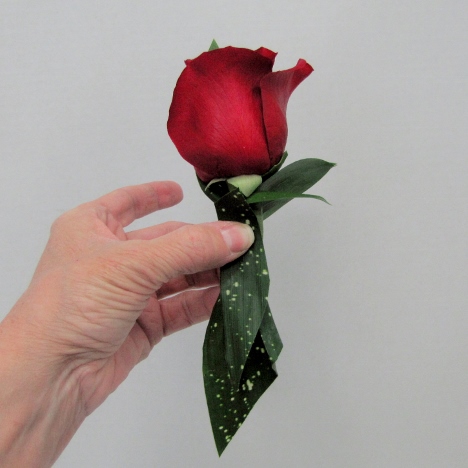
Tape into place using green florist tape.
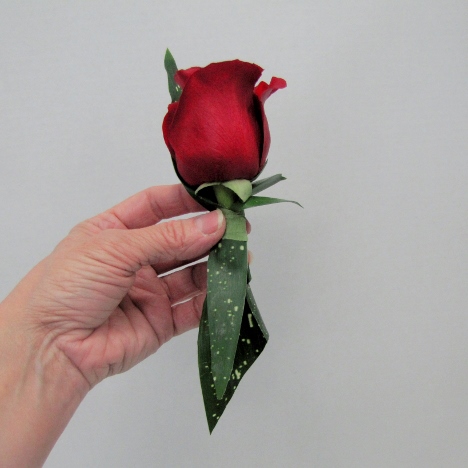
Florists charge so much for their corsages and boutonnieres because of the beautiful accents and mixed greenery they can add to the design.
This product look like rhinestones, but it is actually a silver toned "ribbon" stamped out of acrylic. It is inexpensive and impervious to water.
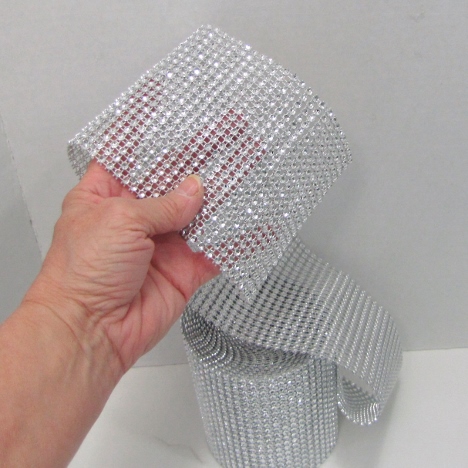
You can cut off strips with regular scissors and add as accents to corsages, boutonnieres, bouquet handles, hanging down from candelabras, pew decor and more.
I have seen it banded on fondant wedding cakes. Just keep in mind that this product is not rated safe for human consumption - so you would have to put a protective layer between the icing and this diamond band so it doesn't touch any food product.
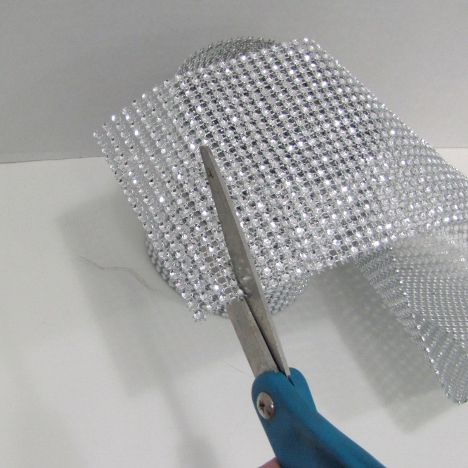
It takes just a little to add a beautiful sparkle to this simple rose boutonniere.
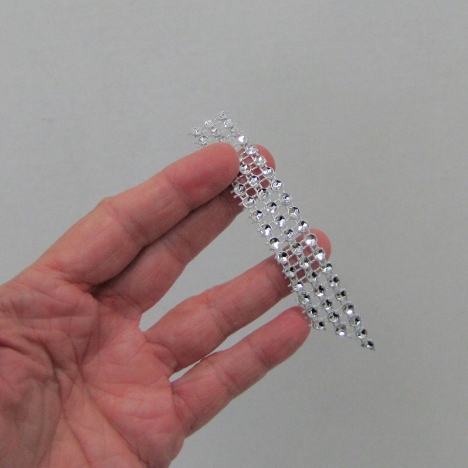
I'm going to wrap it around the middle, covering the cut edge of the aspidistra leaf that you cut to size.
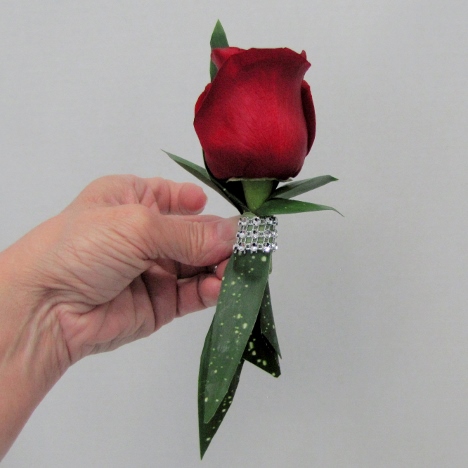
I secured it on the backside with a shortened corsage pin. Push the pin upwards into the rose head to be sure it is firmly in place.
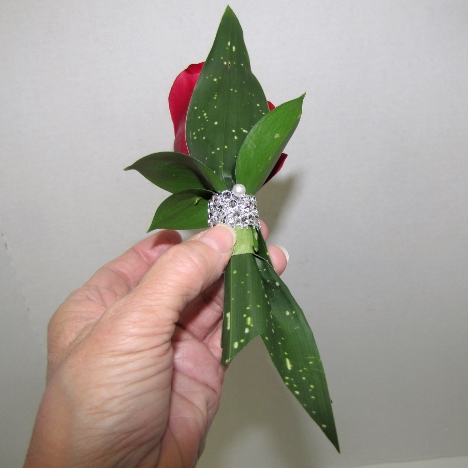
It's the finishing touches that make a boutonniere or corsage unique.
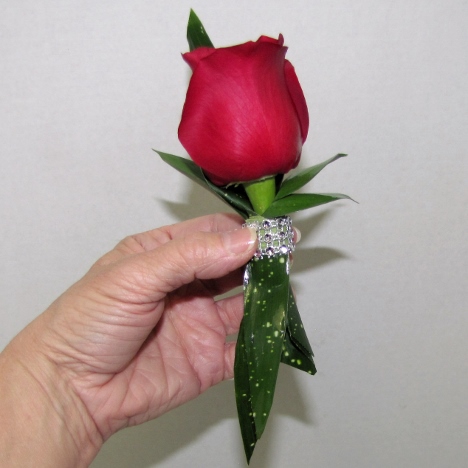
I use professional products like Finishing Touch to seal DIY wedding flowers. Florists have the advantage of large coolers which put moisture INTO the air.
DIY brides usually only have access to regular refrigerators or air conditioned rooms. This is fine - but both of those pull humidity OUT of the air - and will pull it right out of your flowers as well.
Using protective sealants such as Finish Touch and Leafshine will help keep your flowers fresh right up through your wedding day.
Flowers benefit greatly from being processed correctly and resting in water treated with professional flower food.
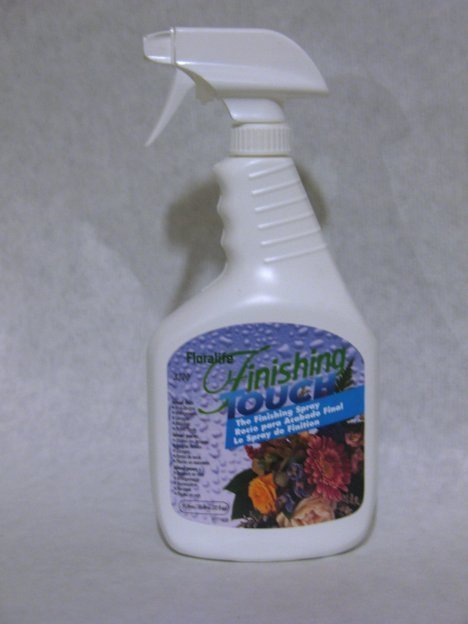
Although Finishing Touch can be used on both flowers and leaves, the Leafshine should be sprayed on greenery only.
Do not rest greenery in anything but plain water and then sprayed with Leafshine.
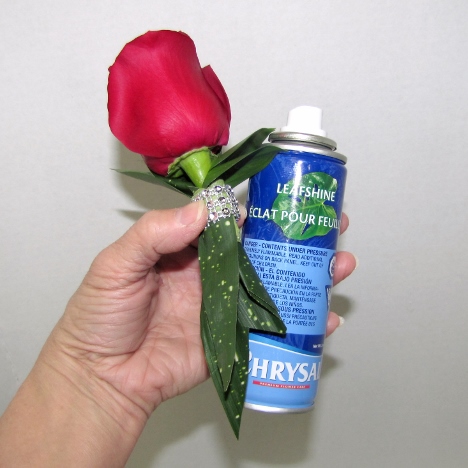
Pin the final boutonniere against the lapel with a pin inserted into the backside of the lapel. I generally push until the sharp point is imbedded into the flower calyx, to keep the flower head from drooping forward.
